Complete the following reactions :
(a) 2MeMgBr+CdCl2→(A)2PhO∣∣C−Cl−−−−−−→(B)+(C)
(b) 
(a) 2Ph−O∣∣C−ClBenzoyl chloride+Me2CdDimethylcadmium→2Ph(A)−O∣∣C(B)Acetophenone−Me+CdCl2(C)Cadmiumcholoride
(b) (D) is a cyclic ester, called lactone. The ester reacts with 2mol of G.R to give 3∘ alcohol. (Two R groups come from the G.R)

( c) (G) is a cyclic anhydride. The anhydride reacts with 2mol of G.R to give 2∘ alcohol (two R groups come from the G.R) Nucleophilic addition (NA) reaction is favoured by the electron-withdrawing group (EWG) and disfavoured by electron-donating group (EDG). The cleavage of ring takes place from the side not containing the EDG (Me group).
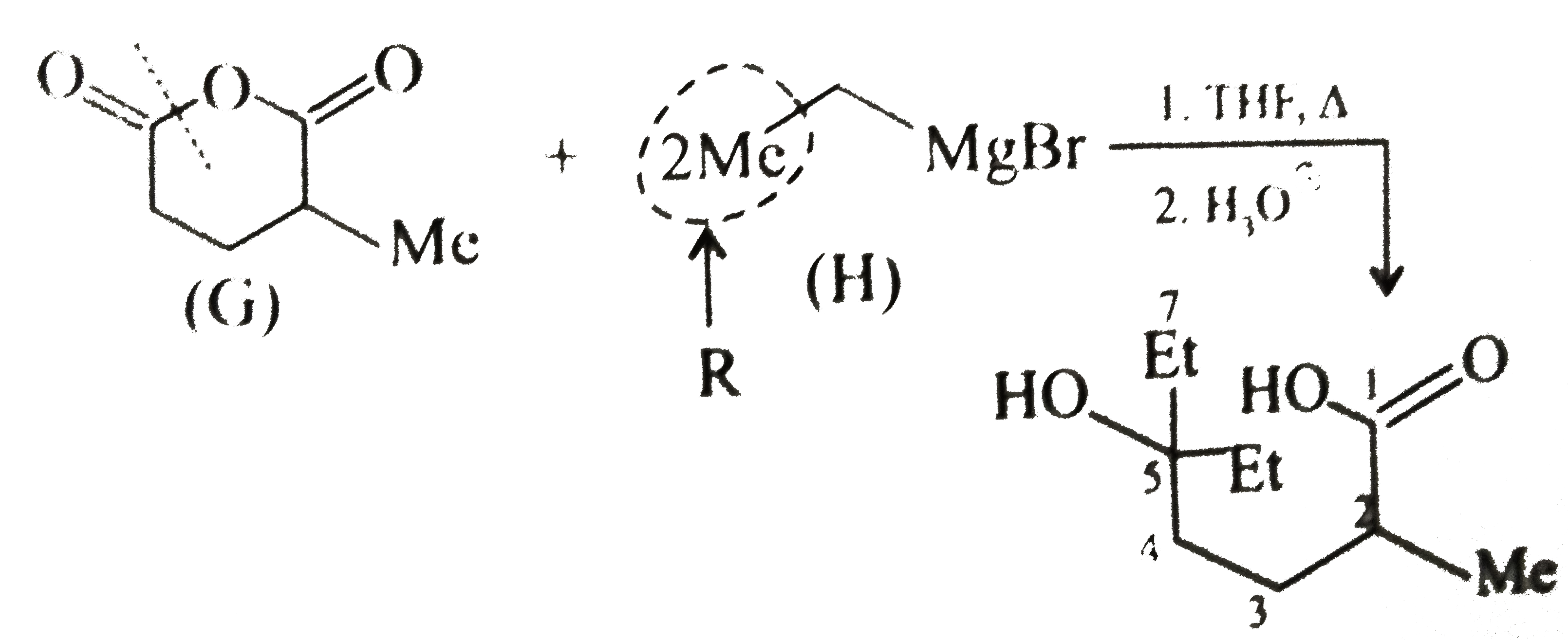
(d) (J) is a cyclic amide, called lactam. The amide reacts with 2mol of G.R to give ketone (one R comes from the G.R).

In (e),(f) and (g), less reactive R2CuLi (dialkyl lithium cuprate) reacts only with more reactive ⎛⎜
⎜⎝−O∣∣C−Cl⎞⎟
⎟⎠
group, but more reactive G.R reacts with both ⎛⎜
⎜⎝−O∣∣C−Cl⎞⎟
⎟⎠ and (−C≡N) groups. Two moles of G.R reacts with ⎛⎜
⎜⎝−O∣∣C−Cl⎞⎟
⎟⎠ group to give 3∘ alcohol (two R groups come from the G.R) , but with (−C≡N) group, the G.R gives ketone (one R group comes from G.R).
(e) 
Topper's Solved these Questions
- GRIGNARD REAGENTS AND ORGANOMETALLIC REAGENTSBook:CENGAGE CHEMISTRYChapter:GRIGNARD REAGENTS AND ORGANOMETALLIC REAGENTSExercise:Solved Examples
Explore 15 Videos
- GRIGNARD REAGENTS AND ORGANOMETALLIC REAGENTSBook:CENGAGE CHEMISTRYChapter:GRIGNARD REAGENTS AND ORGANOMETALLIC REAGENTSExercise:Exercises (Subjective )
Explore 17 Videos
- GENERAL PRINCIPLES AND PROCESS OF ISOLATION OF ELEMENTSBook:CENGAGE CHEMISTRYChapter:GENERAL PRINCIPLES AND PROCESS OF ISOLATION OF ELEMENTSExercise:Archives (Subjective)
Explore 14 Videos
- NCERT BASED EXERCISEBook:CENGAGE CHEMISTRYChapter:NCERT BASED EXERCISEExercise:Nuclear Chemistry (NCERT Exercise)
Explore 29 Videos
Similar Questions
Knowledge Check
Correct name for the following compound is :
Cl−CH2−O∣∣C−O−O∣∣C−CH2−ClABis ( Chloroacetic anhydride)BBis(Chloroethanoic anhydride)CChloroethanoic anhydrideD1−Chloroethanoyloxy−2−chloroethenoneIn the following reaction, C is
CH3−CH=CH2HI−−→AKCN−−→BH2∅H+−−−−→CACH3CH2COOHBCH3−CH2−CH3CCH3OHDCH3C∣CH3HCOOH
Complete the following reactions :
(i) C6H6CI2/Fe−−−−→XCuCN−−−−−−→PyridineYH+,H2O−−−−−→
(ii) C2H4HBr−−→Xaq.KOH−−−−→YI2.NaOH−−−−−→Z
(iii) CH3CH2BrAgCN−−−→A
View SolutionComplete the following reactions:
(i) CH3−CH3∣C∣Cl−CH2CH3alcKOH−−−−→ΔAO3−−−−−→Zn/H2O(B+C)
(ii) CH3ICH−CH3alcKCN−−−−→A(i)SnCl2/HCl−−−−−−−−−−−−→(ii)H2O.OH.H2O2B
(iii) HCNHCl/AlCl3−−−−−−→A(i)C6H6Δ−−−−−−−−−−→(ii)(H2O)/H−B
(iv)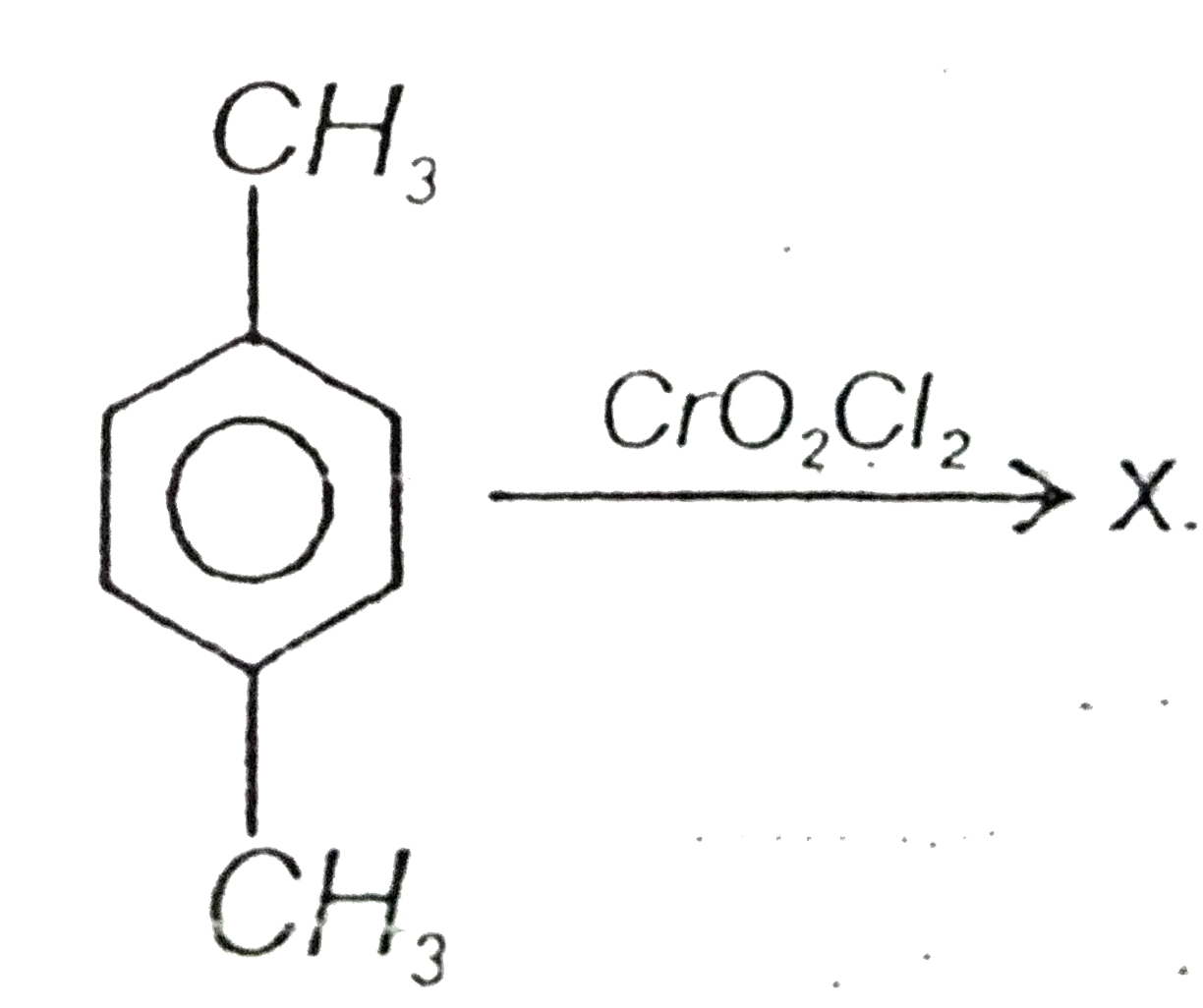
View SolutionComplete the following reaction sequence :
CH3−O∣∣C−CH3(i)CH3MgBr−−−−−−−−→(ii)H2O(A)Na metal−−−−→ether(B)CH3−Br−−−−−→(C)
View SolutionComplete the following reactions :
(a) C6H6+Ac2OAlCl3−−→(A)1.Br2/ӨOH−−−−−−→2.H3O⊕(B)
(b)
( c)
(d)
( e)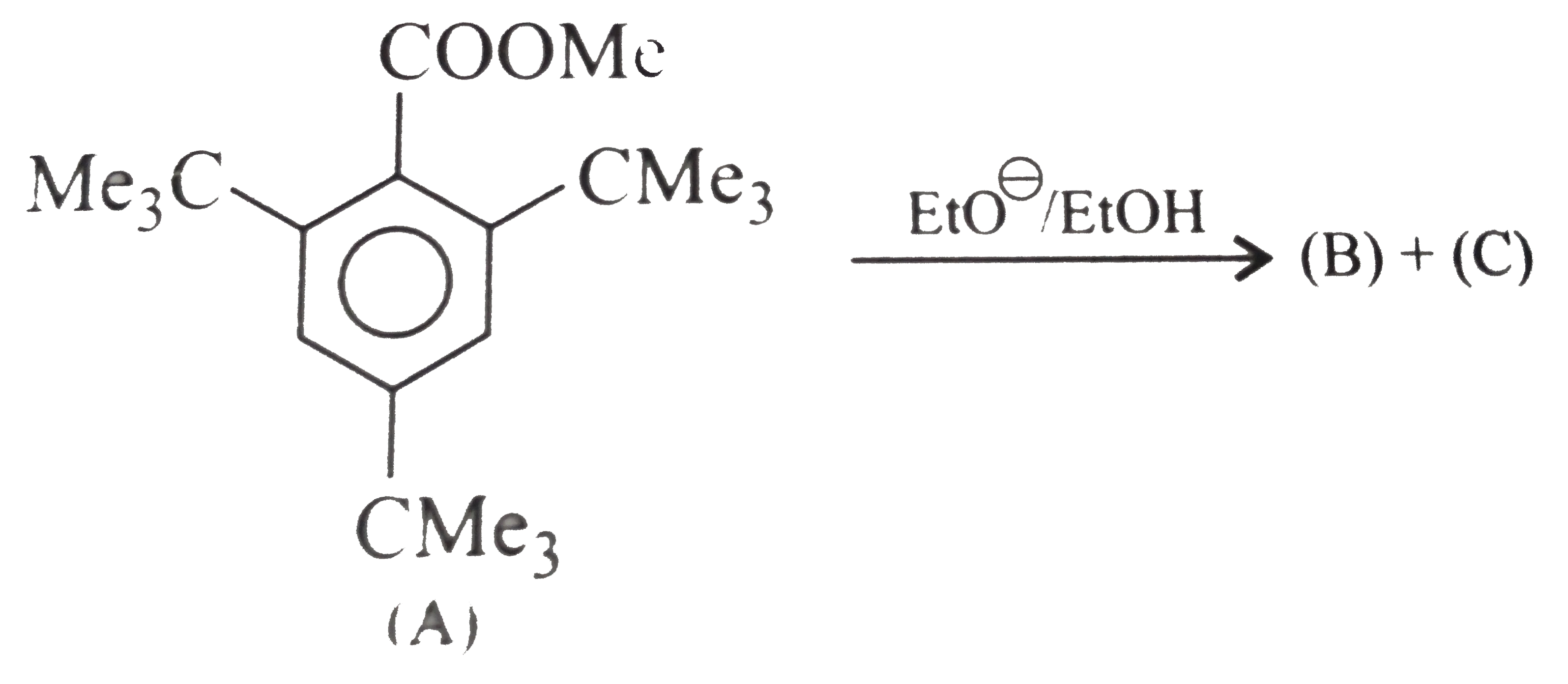
(f)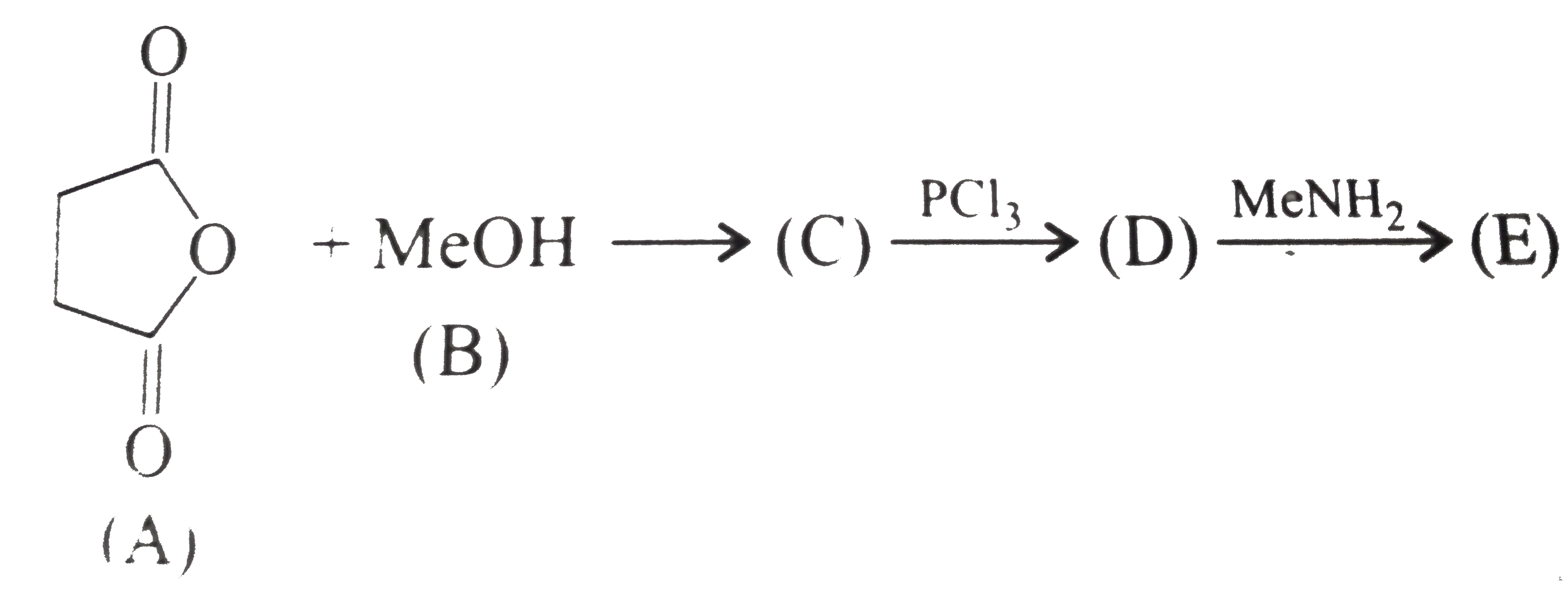
(g) .
.
View SolutionComplete the following reactions sequence:
CH3−O∣∣C−CH3(i)CH3MgBr−−−−−−−−→(ii)H2O(A)Na metal−−−−−→Ether(B)CH3−Br−−−−−→(C)
View SolutionComplete the following reaction sequence
CH3−O∣∣C−CH3(i)CH3MgBr−−−−−−−−→(ii)H2O(A)Na metal −−−−−→Ether (B)CH3−Br−−−−−→(C)
View Solution


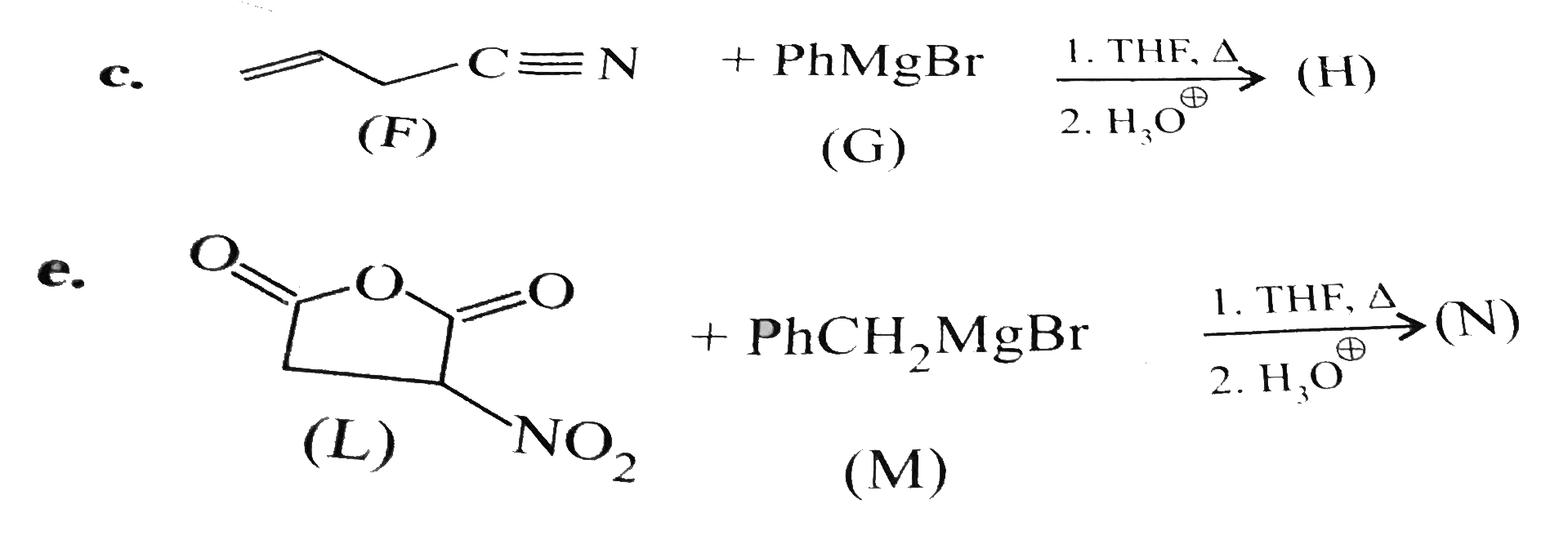


 .
.